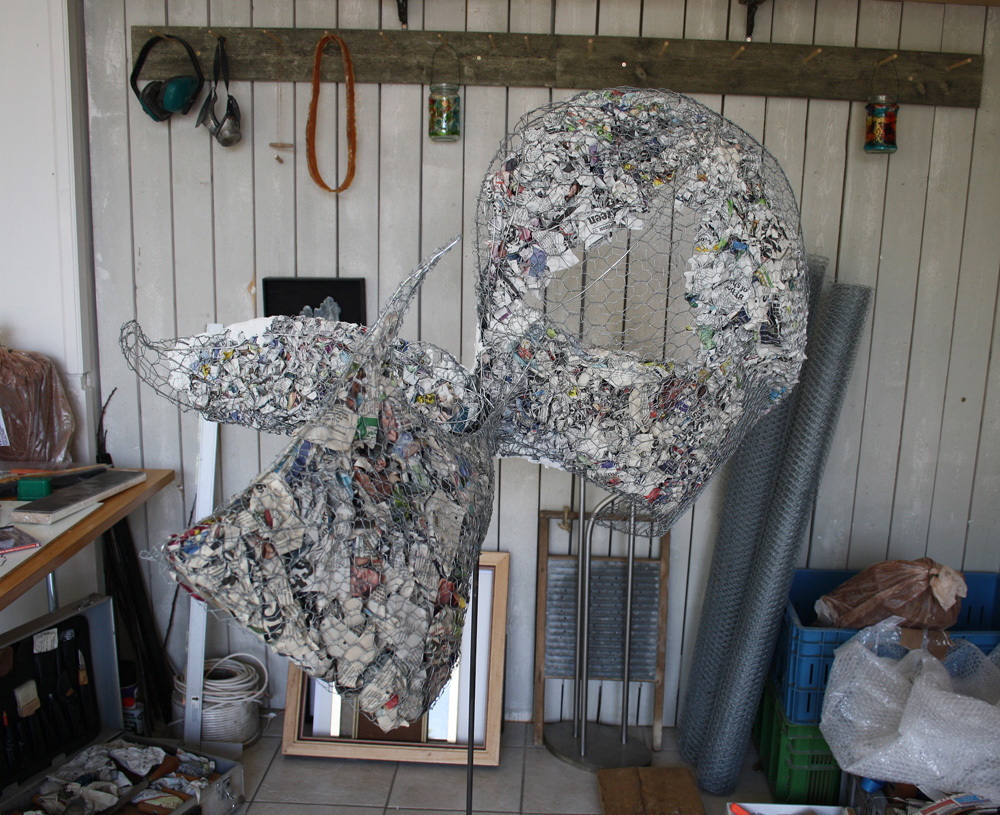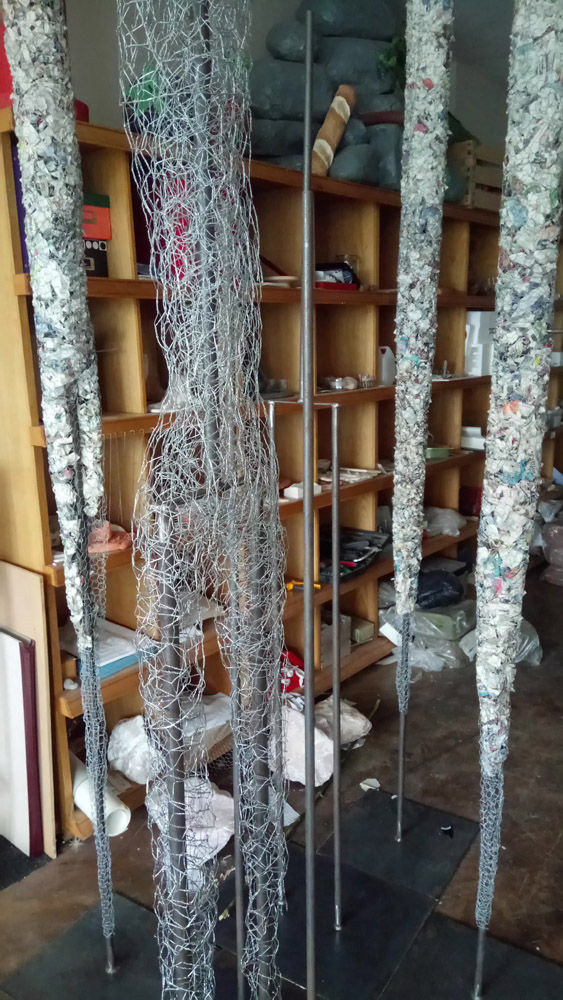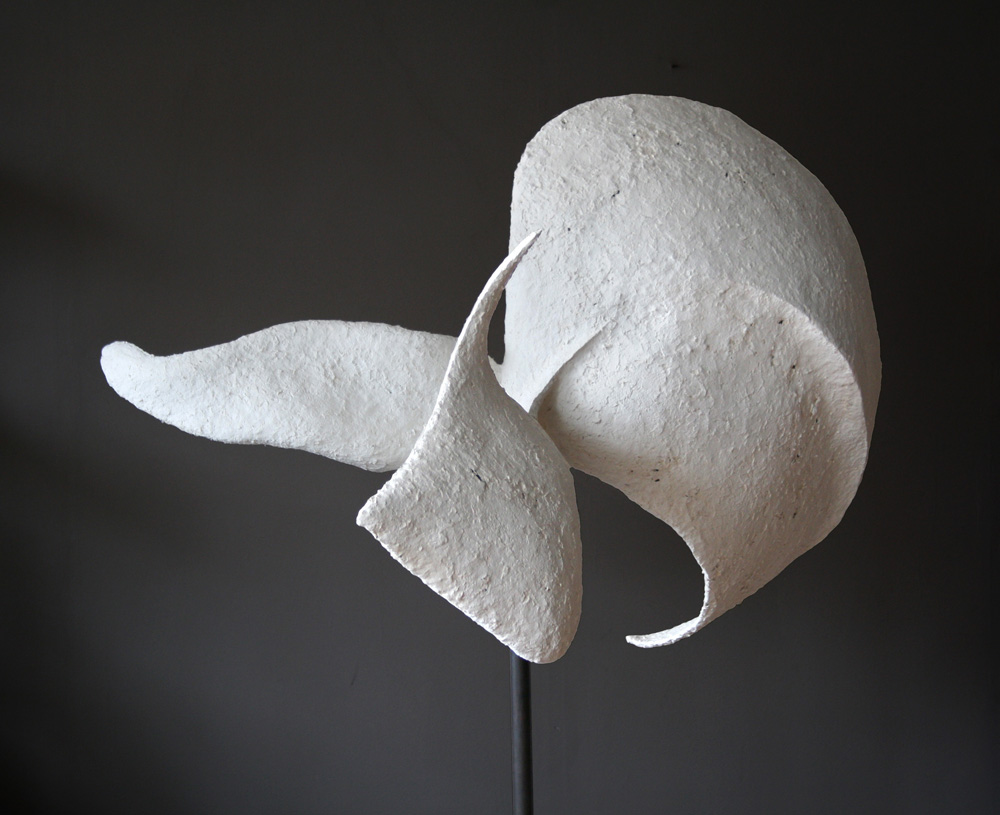
There are a great many materials and methods that can be used for sculpture. What you choose depends on the design of the project you are working on. Clay modelling is a wonderful technique but it has its limitations when it comes to more delicate, larger or complex forms. For example, a sculpture of a horse would be difficult using clay alone due to the slender legs and the weight of the wet clay bearing down on them. In such a case, you could build your sculpture using an armature.

An armature is a structure on which a sculpture can be built; its carrier. Traditionally it is built using wire and chicken wire but there are many variations on this theme. The size and design of the sculpture you plan to make will determine the best steps in making your armature. If it is well built and sound this will make further steps easier and more successful. A weakness in the armature will be reflected in your sculpture.
Once the armature is built there are two possibilities:
In the first – clay is used and modelled onto the form. When finished, a mould would need to be taken for the sculpture to be cast in plaster, bronze or any other suitable material. Clay when it dries will shrink and crack on the rigid structure of the armature so is not suitable for a direct finished piece.
In the second – there are many materials that can be used to work directly onto an armature to create a finished piece. These include papier mâché, paper clay, plaster (including plaster bandages / modroc) and cement. The choice of material depends on the quality of surface you want to achieve and the amount of detail desired.

Find out about the Sculpture using Armatures course …
View gallery …
